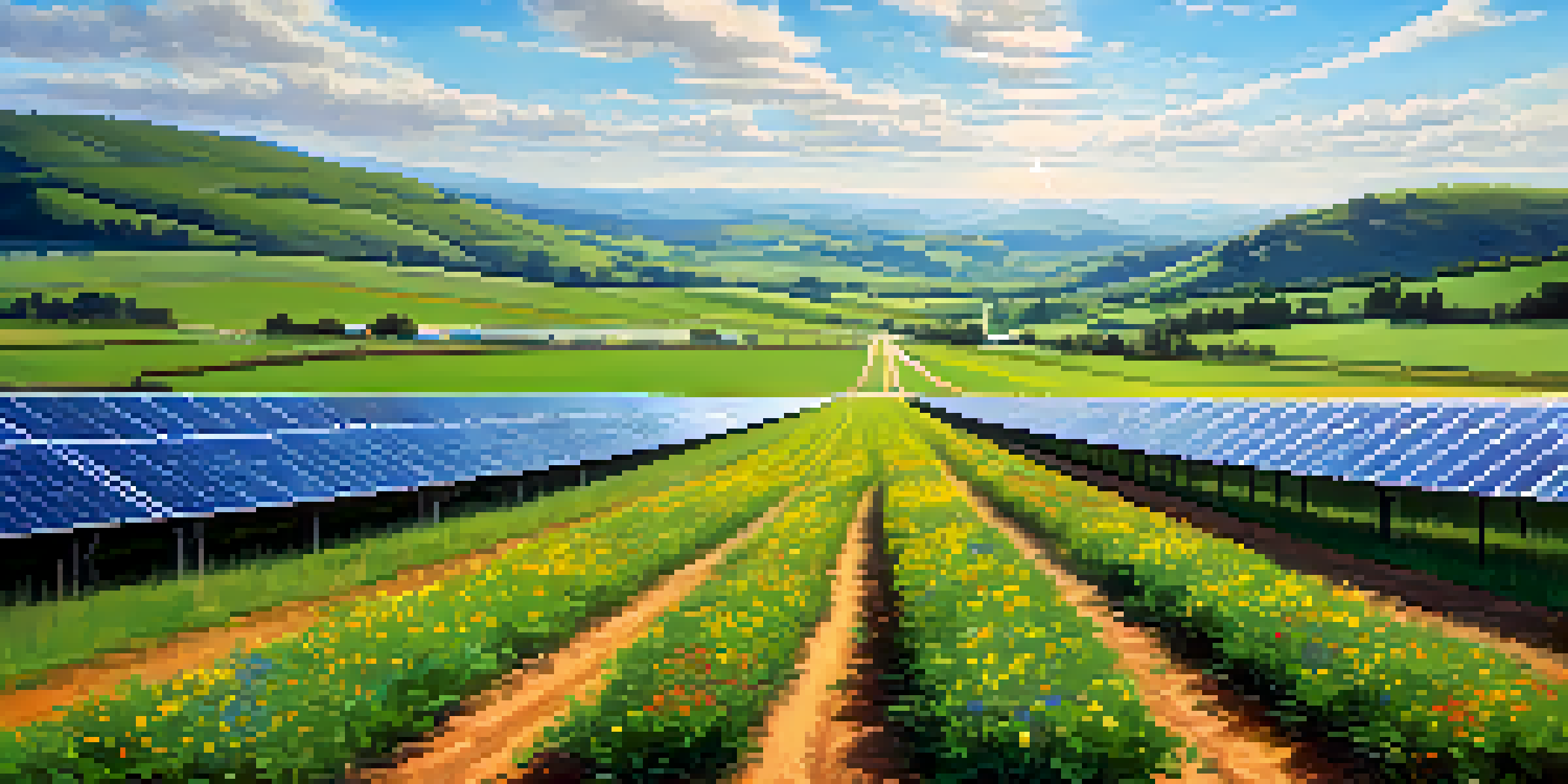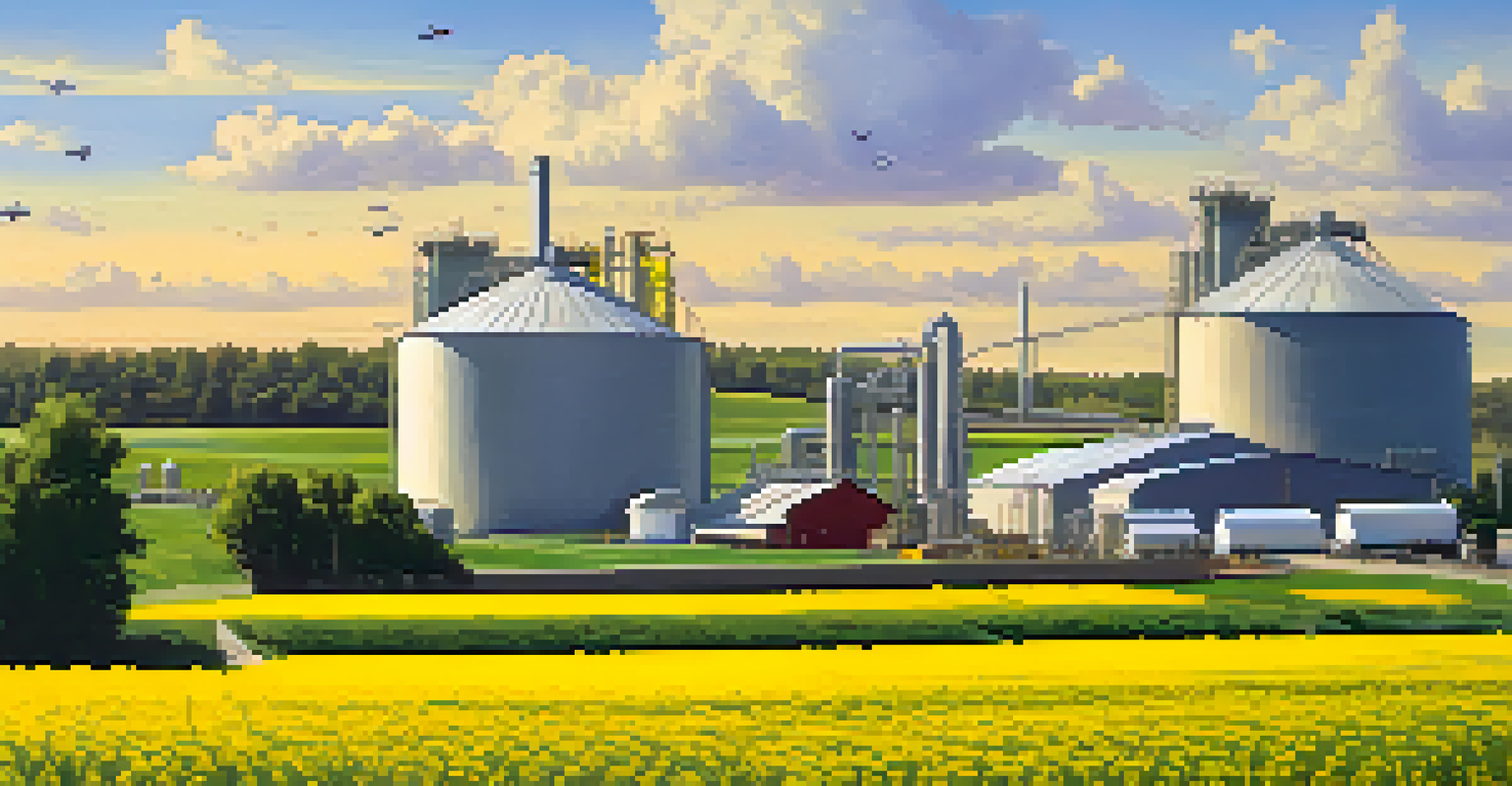Investing in Renewable Energy Commodities: A New Trend

Understanding Renewable Energy Commodities and Their Importance
Renewable energy commodities include natural resources like solar, wind, and biofuels that are harnessed for energy production. As the world shifts towards sustainability, these commodities play a crucial role in reducing carbon footprints and combating climate change. By investing in these resources, individuals are not just diversifying their portfolios but also contributing to a healthier planet.
The greatest threat to our planet is the belief that someone else will save it.
The significance of renewable energy commodities is underscored by global trends favoring clean energy over fossil fuels. For instance, countries are setting ambitious targets for carbon neutrality, prompting the increased demand for renewable resources. This shift not only reflects a growing awareness of environmental issues but also presents a lucrative investment opportunity for those looking to align their financial goals with global sustainability efforts.
Moreover, as technological advancements continue to lower the costs of renewable energy production, the market for these commodities is expected to expand. Investors can benefit from this trend by tapping into sectors that promise both ecological and economic returns. Ultimately, understanding these commodities is the first step in making informed investment decisions.
The Rise of Renewable Energy Investments in Recent Years
Over the past decade, renewable energy investments have seen remarkable growth, driven by both policy changes and market demand. Governments worldwide have introduced incentives for clean energy projects, making it easier for investors to enter the market. For example, tax credits and subsidies for solar and wind projects have led to increased capital flow into these sectors.

In addition to government support, there has been a notable shift in consumer behavior, with more individuals and businesses seeking sustainable energy solutions. This demand has prompted major corporations to invest heavily in renewable energy projects, further driving market growth. As consumers become more eco-conscious, the appetite for renewable energy commodities is only expected to increase.
Importance of Renewable Commodities
Renewable energy commodities are essential for reducing carbon footprints and aligning investments with global sustainability efforts.
As a result, various funds and investment vehicles are now specifically focusing on renewable energy, allowing investors to diversify their portfolios. This trend signifies not just a financial opportunity but a collective movement towards a sustainable future. Investing in renewable energy has transformed from a niche market into a mainstream financial strategy.
Key Renewable Energy Commodities to Consider
When it comes to investing in renewable energy, several commodities stand out as particularly promising. Solar energy, derived from sunlight, has become one of the most accessible and widely adopted forms of renewable energy. As technology advances, the cost of solar panels continues to drop, making it an attractive option for both residential and commercial investments.
Investing in renewable energy is not only a way to make a profit, but it's also a way to make a difference.
Wind energy is another significant player in the renewable market, harnessing the power of wind through turbines. With offshore and onshore wind farms gaining traction, investors can tap into a rapidly growing sector. As countries aim to increase their wind energy capacity, this commodity offers exciting prospects for long-term investment.
Lastly, biofuels, which are derived from organic materials, present a unique opportunity in the renewable energy landscape. With innovations in production techniques and feedstock availability, biofuels are becoming an increasingly viable alternative to fossil fuels. Each of these commodities carries its own set of risks and rewards, so understanding them is essential for successful investment.
Benefits of Investing in Renewable Energy Commodities
Investing in renewable energy commodities comes with a plethora of benefits. First and foremost, these investments align with the global push towards sustainability, allowing investors to support eco-friendly initiatives. This alignment not only provides a sense of fulfillment but can also enhance a brand's reputation for socially responsible investing.
Financially, renewable energy investments have shown resilience, even during economic downturns. As the world increasingly moves away from fossil fuels, the demand for renewable sources is likely to rise, providing a hedge against market volatility. Additionally, renewable energy projects often have long-term contracts, ensuring a steady income stream for investors.
Growth of Renewable Energy Investments
Recent years have seen a surge in renewable energy investments driven by government incentives and increasing consumer demand.
Moreover, the renewable energy sector is ripe for innovation, with new technologies continuously emerging. This creates opportunities for early investors to capitalize on cutting-edge advancements. By choosing to invest in renewable energy commodities, individuals are participating in a transformative industry that promises both financial and environmental benefits.
Risks Associated with Renewable Energy Investments
While the potential rewards of investing in renewable energy commodities are significant, it’s essential to recognize the risks involved. One of the primary concerns is regulatory risk, as changes in government policies or incentives can impact the viability of renewable energy projects. Investors should stay informed about policy shifts that could affect their investments.
Another risk is market volatility, which can affect the pricing of renewable commodities. For example, fluctuations in oil prices may influence the competitiveness of renewable energy sources. Investors need to be prepared for the possibility of short-term price swings while focusing on the long-term growth of the sector.
Lastly, technological risks also come into play, as rapid advancements can render existing technologies obsolete. This is particularly true in sectors like solar and wind energy, where new innovations may disrupt current market dynamics. Conducting thorough research and staying updated on industry trends can help mitigate these risks and guide investment decisions.
How to Get Started with Renewable Energy Investments
Getting started in renewable energy investments doesn’t have to be daunting. A good first step is to educate yourself about the various renewable energy commodities available, from solar and wind to biofuels. Familiarizing yourself with the market trends and understanding the dynamics of each commodity will empower you to make informed decisions.
Once you have a grasp on the landscape, consider your investment options. You can invest directly in renewable energy projects, purchase shares in companies focused on renewable energy, or explore exchange-traded funds (ETFs) that specialize in clean energy. This diversity allows you to spread your risk while still participating in the growth of the sector.
Future Potential of Renewable Energy
As technology advances and global awareness of climate change grows, the market for renewable energy commodities is expected to expand significantly.
Finally, it’s crucial to consult with financial advisors who have experience in renewable energy investments. They can provide guidance tailored to your financial goals and risk tolerance. By taking these steps, you can confidently navigate the exciting world of renewable energy investments.
Future Outlook for Renewable Energy Commodities
The future of renewable energy commodities looks promising as global awareness of climate change continues to grow. Countries are making significant investments in renewable infrastructure, which is expected to create a robust market for these commodities. This shift indicates that renewable energy is not just a trend, but a fundamental change in how we produce and consume energy.
Technological advancements will also play a critical role in shaping the future of renewable energy investments. Innovations in energy storage, efficiency, and production methods are likely to enhance the accessibility and affordability of renewable commodities. As these technologies evolve, they will open new avenues for investment and growth.

Ultimately, as more investors recognize the potential of renewable energy, we can expect a surge in capital flowing into this sector. This growing interest not only supports financial growth but also promotes a sustainable future for our planet. Investing in renewable energy commodities now could mean being part of a significant global shift towards a cleaner, greener economy.